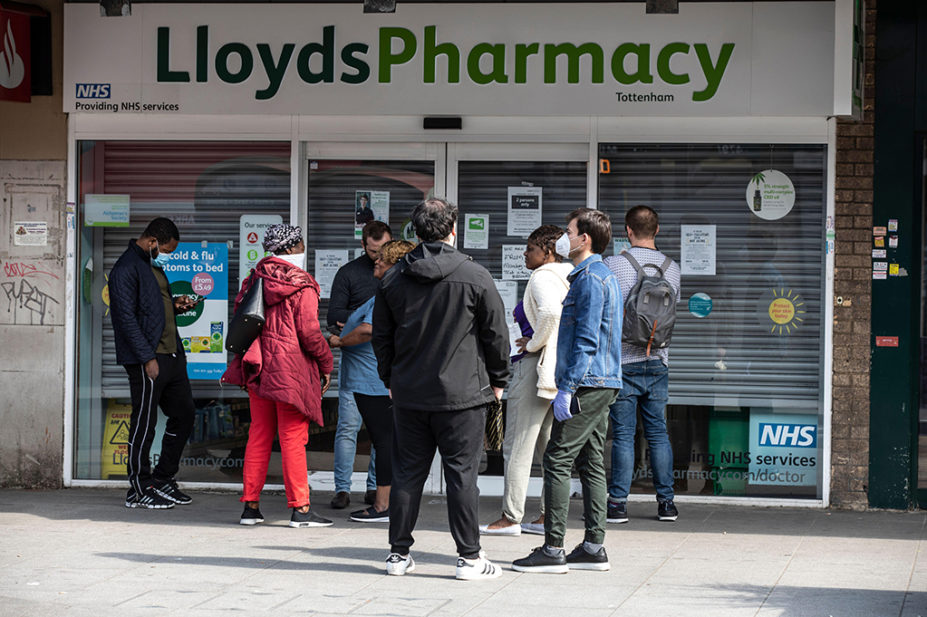
Jeff Gilbert / Alamy Stock Photo
Community pharmacies are having to cope with major gaps in their workforce, results from a survey published by Health Education England (HEE) on 20 January 2022 have shown.
The ‘Community Pharmacy Workforce Survey’, published on 20 January 2022, shows vacancy rates of up to 20% for some community pharmacy roles, with “notable variations” in recruitment difficulties between regions of England.
The results from the survey, sent to all community pharmacies in England, of which 47% responded in May and June 2021, provide an update on the state of the workforce since the survey was last conducted in 2017.
The results show that 27,406 community pharmacists fill 20,489 full-time equivalent (FTE) posts in England, including those who are self-employed.
However, it also reveals that 8% of all FTE pharmacist posts were vacant — up from the 4% FTE vacancy rate found by the 2017 survey. The FTE pharmacist vacancy rate varied by region, with the highest rate in the South West of England (14%) and lowest in the North East and Yorkshire region (7%).
Reported vacancy rates were higher for other pharmacy roles, with 20% FTE vacancy rates for accuracy checkers (up from 6% in 2017) and 18% for trainee medicine counter assistants (up from 8% in 2017).
In March 2021, pharmacists were added to the Home Office’s shortage occupation list. Following this, a report by the Community Pharmacy Workforce Development Group (CPWDG), published in June 2021, found that 9% of FTE community pharmacist positions in England were vacant as of July 2020.
At the time, the CPWDG recommended that policy makers and professional bodies “undertake a programme of collaborative work to ensure community pharmacy is seen as an attractive career choice”.
Then, in October 2021, The Pharmaceutical Journal reported that 78% of nearly 1,000 pharmacists responding to its 2021 salary and job satisfaction survey said that a “lack of staff” was a barrier to doing their job effectively. Data from the PJ survey was cited by the HEE report.
The HEE survey also found no increase in the proportion of pharmacy prescribers in England since 2017, with 1,154 independent prescriber pharmacists filling 933 FTE roles. This equates to approximately one independent prescriber per ten community pharmacies, the same proportion as in 2017.
Leyla Hannbeck, chief executive officer of the Association of Independent Multiple Pharmacies (AIM), said that the figures illustrated that the sector is going through “a massive workforce issue”
She added: “It’s been very challenging in terms of recruiting for pharmacists, within community pharmacy, because there’s now loads of other places, like general practice, where, people can work.
“Decision makers need to give community pharmacies the same level playing field as GPs. For example, if GPs are getting funded to recruit people in the GP practice, we should also be getting funding to recruit more people within our pharmacies to make sure that the demand is met.”
Hannbeck said AIM was working with the CPWDG on making community pharmacy an attractive place to work adding: “We are actively trying, but some things are against us.”
Director of corporate affairs at the National Pharmacy Association, Gareth Jones, said that although the survey had a “relatively low response rate”, the figures were consistent with what he hears from pharmacies struggling to recruit and retain pharmacy staff.
He added: “It’s a complicated picture, with the pressures of the pandemic overlaying the dire funding situation and a continued drain of pharmacy staff into GP surgeries. We continue to work with NHS England, HEE and other pharmacy bodies to seek solutions that will help in the short, medium and long term.”
Jones added that it should be a requirement that local impact assessments are carried out prior to any recruitment into GP or primary care network roles.


